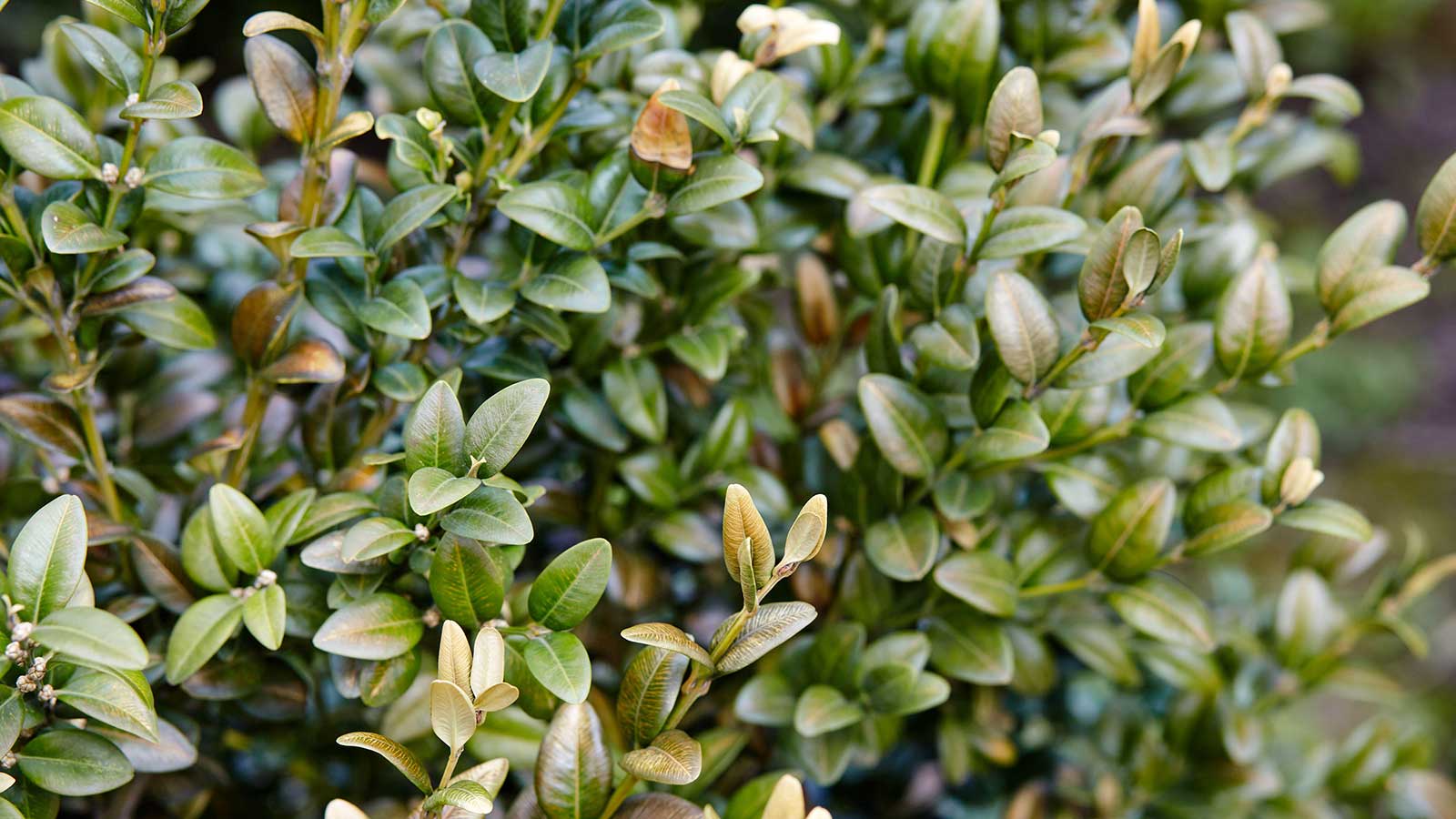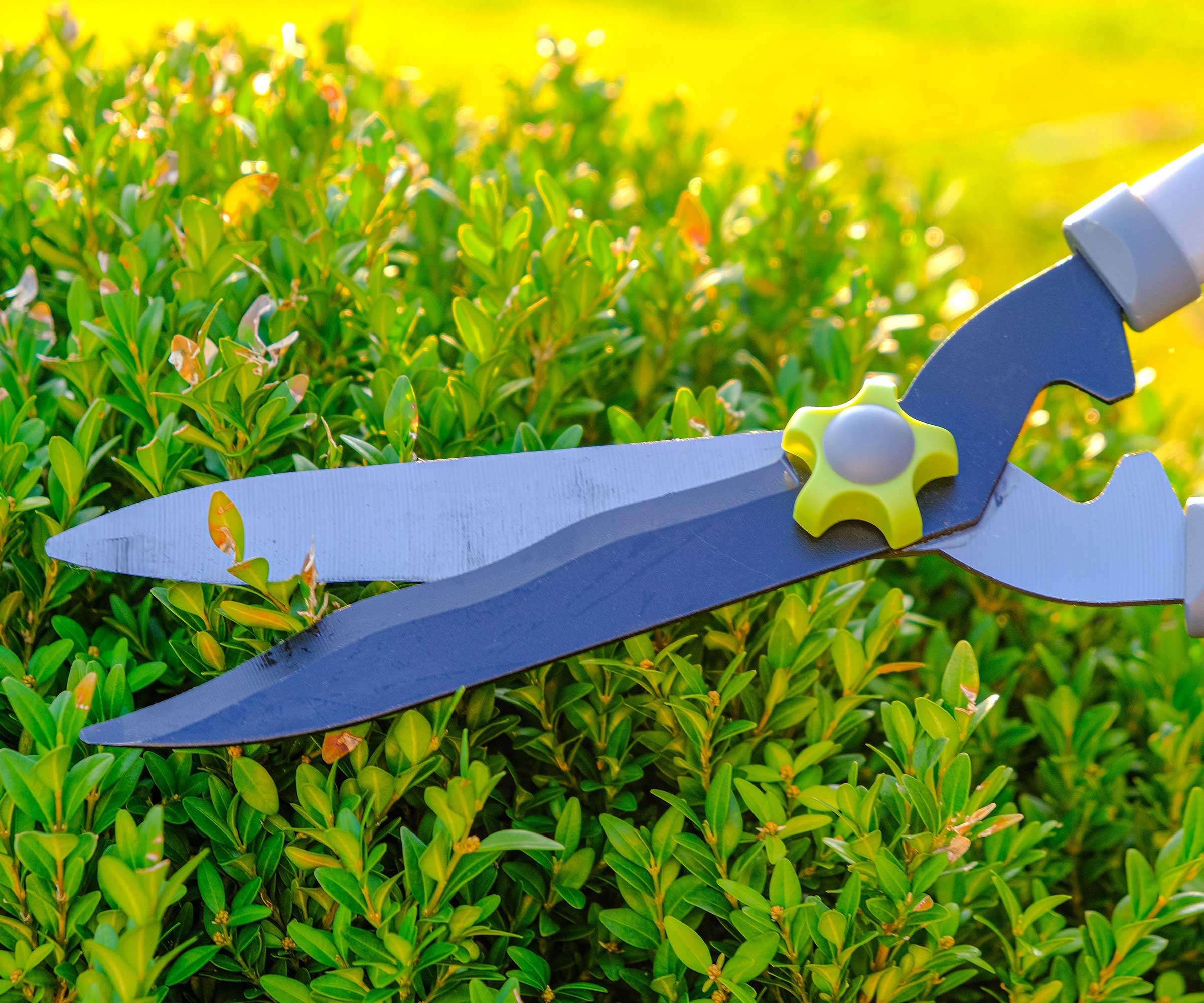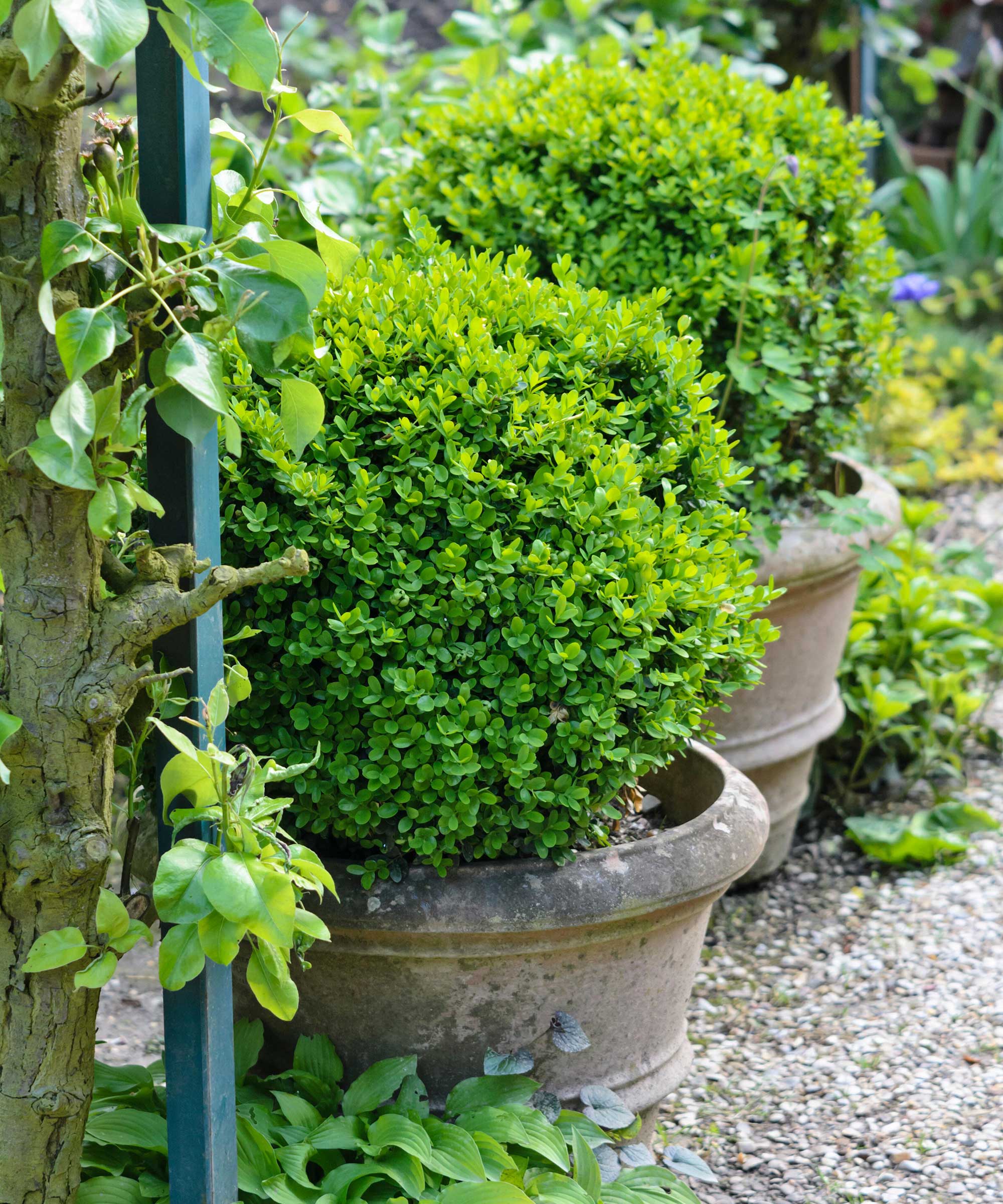Why is my boxwood turning yellow? 4 reasons for discoloration on your shrubs
Get your buxus shrubs looking green and glorious again


When it's healthy, boxwood, otherwise known as buxus, brings a deep, glossy green to the garden. But sometimes the leaves can discolor, turning yellow or brown, which spoils the aesthetic.
There are a few reasons behind this – from environmental stress to pests. The good news is that most can be solved with a little TLC, meaning it may well be possible to salvage your evergreen shrub.
So, if you've noticed yellowing foliage, don't despair – our simple guide explains the possible causes, and what to do to restore their former glory.

Boxwood is a good choice for formal hedging around flower beds
1. Winter weather
According to the Royal Horticultural Society (the RHS), inclement winter weather can take its toll on boxwood.
Yellowing can be caused by waterlogged soil, they explain, particularly if it is clay. To treat the plants, they suggest digging them up and removing any rotting or dead roots. Trim your boxwood to remove the affected top growth, too – these hedge shears from Amazon are perfect for the job. Then, re-plant it in a new, more suitable site (somewhere sheltered from harsh winds is ideal), or into fresh compost with added grit to aid drainage. If your boxwood is in pots, consider reducing your watering regime and ensure there are drainage holes in the bottom of the containers.
The tips of leaves can also turn yellow due to low temperatures, the RHS explains. And, frost damage can cause new, early-spring growth to turn pale brown and papery. In this instance, there's no need to re-plant the shrubs, but affected areas can be clipped back in spring. Applying a fertilizer afterward will help to revive them and encourage new, green growth.
Next fall, apply a thick layer of mulch around your boxwood – but not so it touches the stem. This will help to protect it through the colder season.
Design expertise in your inbox – from inspiring decorating ideas and beautiful celebrity homes to practical gardening advice and shopping round-ups.

Discolored leaves from winter damage can be pruned back in spring
2. High temperatures
Box can also turn yellow or orange due to excessive heat and sunshine. Established plants are more tolerant of drought, but will still appreciate a bit of watering in very dry spells.
Water box in container gardens and younger shrubs frequently, but avoid allowing the soil to become waterlogged.

Keep box balls in containers well-watered
3. Box blight
If yellowing leaves are accompanied by dead, brown patches, your shrub may have succumbed to box blight. You may spot black streaks on the stems, too.

John has been a garden journalist for over 50 years and regularly answers readers' questions in Amateur Gardening magazine, including many about evergreen shrubs. He has also written four books and has delivered many talks over the years on horticulture.
Box blight, if unchecked, will destroy the whole bush, says the Amateur Gardening team. John Negus adds that two fungi are responsible (Cylindrocladium buxicola and Volutella Buxi) and they often occur together.
'Cut back infected shoots to live, healthy tissue and bin or burn prunings,' says the team. They then advise spraying the plant with a fungicide for ornamental plants, which hopefully will check the spread of the disease. Fertilizing the evergreen shrub can also help nurse it back to health – John Negus recommends feeding with a sulfate of potash monthly from mid-spring until fall. Simply sprinkle it over the root area and water it in.
'If the above action doesn’t control the disease, I urge you to remove the bush, roots and all, and the root-area soil,' adds the team.

Box blight is a common problem, but if dealt with quickly, it can be solved
4. Caterpillars and other pests
Caterpillars can invade box bushes and cause leaves to turn pale yellow or brown before dying.
'The best way to combat this insidious pest is to hand-pick caterpillars and install one or more box tree moth traps,' says John Negus. These are based on pheromones that lure male moths literally to a sticky end, so that female eggs remain unfertilized, he explains.
Boxwood leafminer can also be a nuisance and cause yellow leaves and a blistered appearance. Some varieties of boxwood are more resilient than others, and spring pruning and pesticides can help deter their damage.

Holly started writing about gardening five years ago, and she is a regular contributor to Homes & Gardens. She has also written many gardening features for Woman & Home and Real Homes, too. She has previous experience as a professional gardener, where she helped to plant and maintain private gardens. Holly has also looked after allotment plots over the years and loves to grow her own flowers and veggies from seed. In her spare time, she enjoys visiting local gardens, botanical drawing, and tending to her ever-growing collection of houseplants.